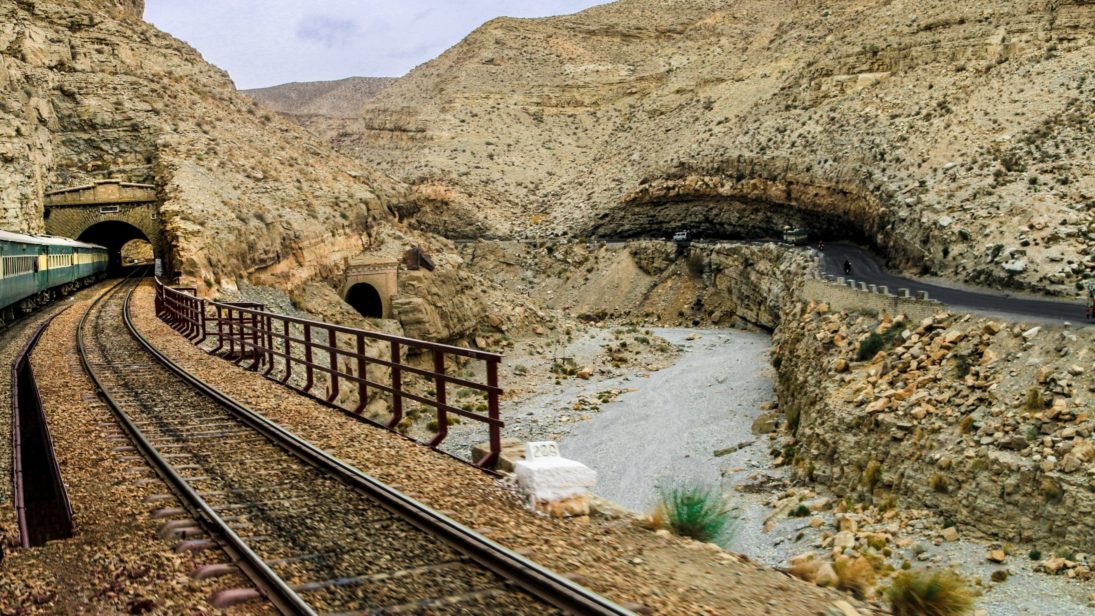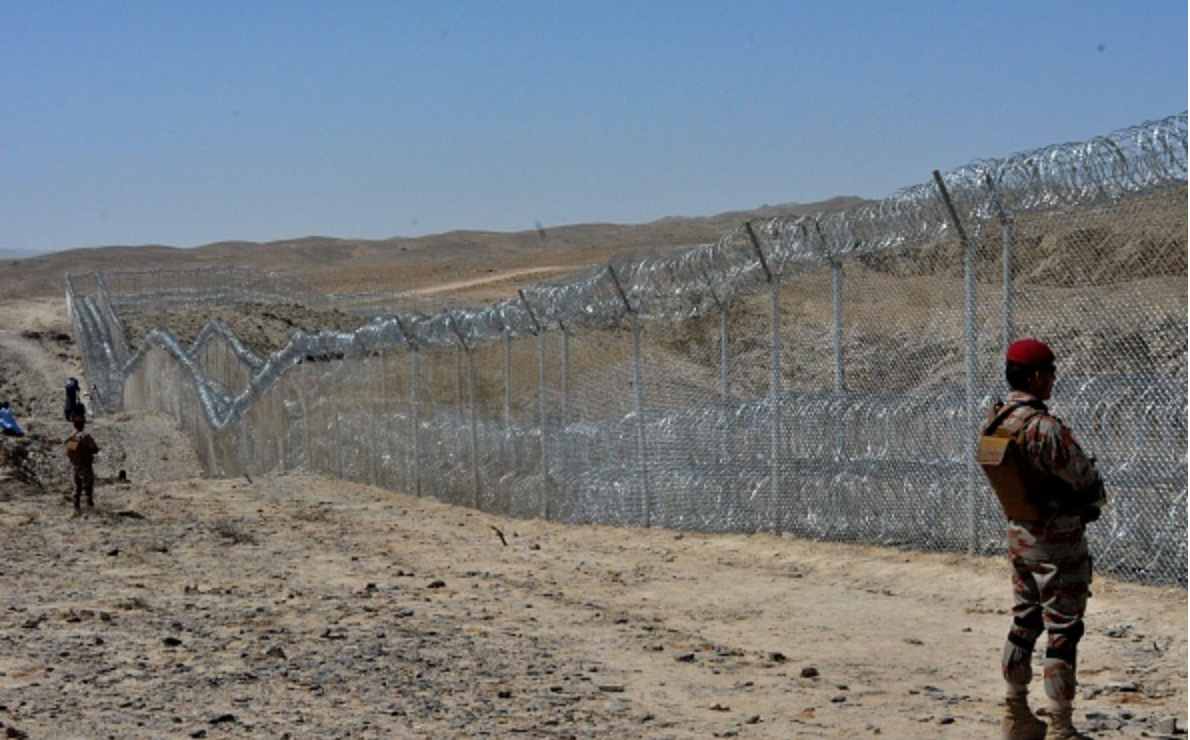
The Afghanistan-Pakistan border in Chaman, Balochistan has been the site of persistent skirmishes and deadly border clashes between security forces and citizens. In November 2020, a clash between security personnel and local traders claimed the life of a 14-year-old boy while nine others were injured. This was one instance of what has become commonplace in the region. Ironically, the border crossing is named ‘Bab-e-Dosti’—which translates to “Gate of Friendship”—despite being the locus of incessant bilateral tensions and animosity.
In 2016 Pakistan began fencing the Durand Line on the grounds that it would restrict the movement of militants. Those opposed to this project, including the Afghan government, have referred to this as a form subterfuge really intended to solidify Pakistan’s claim over the Durand Line as a legitimate border between both countries. In the midst of high politics and strategic decision making, local realities are disregarded, communities are divided arbitrarily, and community consent and participation is precluded from decisions pertaining to border management. While border management systems exist across the world, successful border control and harmonious bilateral relations are contingent on joint surveillance systems, mutual agreements on border closures, and decision-making conscious of the interests and aspirations of local communities. In the case of the Pakistan-Afghanistan border, Pakistan typically makes unilateral decisions concerning border management. This unequal regulation of a porous border that requires close coordination between both countries disrupts bilateral relations and threatens the success of border operations writ large.
The Function of Barriers
Successful border control and harmonious bilateral relations are contingent on joint surveillance systems, mutual agreements on border closures, and decision-making conscious of the interests and aspirations of local communities.
Borders and barriers are not simply material objects and instruments bifurcating territories and controlling movement within that space. They are socio-political and technical devices that perform the role of categorizing populations, collecting data, and aiding monitoring and surveillance architectures. These barriers also aid the performance of security practices, exerting political pressure, and the implicit function of differentiating populations and earmarking them as insiders/outsiders, acceptable/unacceptable. By interrupting mobility, the act of inspecting populations produces national identity and sovereignty.
Fencing as a socio-political concept disrupts mutual trust between the two border countries: in the Afghanistan-Pakistan example, Afghanistan believes the Durand Line is an arbitrary border that Pakistan is cementing by means of the fencing project. Fencing also creates tensions between government authorities and cross-border communities as the latter grapple with disruptions in livelihoods—dependent on cross-border mobility, and interpersonal relationships that span across borders. Assurances of easement rights, in consideration of kinship networks of tribes residing along the border, are disregarded during border closures, impinging on the social fabric of these collectives.
The success of the territorial function of these barriers, the explicit reason for Pakistan’s fencing project—keeping unwanted elements out and inhibiting illegal activity—hinges on supplementary measures to combat terrorism. This would require registering and overseeing the madrassa (religious schools) system, introducing democratic and civic structures in regions militarized by the state along with effective institutions and facilities for human development. Addressing extremist sentiments and ideologies on a societal level requires a targeted approach as opposed to short-term and cosmetic solutions of fencing territories. While most of these measures are part of Pakistan’s National Action Plan that was crafted by military and political leaders following the Army Public School massacre, Islamabad has been unable to execute key components of the counterterrorism plan. There is a continued presence of terror cells along the border. Pakistan’s lingering inclusion on the Financial Action Task Force’s grey list is symbolic of the international community’s lack of faith in Pakistan’s commitment to eliminating terrorism. These combined add to Afghanistan’s apprehensions about Pakistan’s real intentions in constructing the fence.
Performative governance through constructing barriers glosses over historical and political realities of state support for insurgent elements and passes it off as a problem merely existing as a consequence of weak border management. Sincere counterterrorism solutions would consider all these dynamics before venturing into fencing a border than has serious implications for bilateral ties and the social fabric of cross-border communities. Suspicion and mistrust between both countries, as a result of unilateral border fencing and policies, will only escalate bilateral tensions along with the possibility of both adopting overt strategic policies that could lead to insurgency in the region.

Collaboration and Consensus
Performative governance through constructing barriers glosses over historical and political realities of state support for insurgent elements and passes it off as a problem merely existing as a consequence of weak border management.
Borderland regions have nuances and unique dynamics that need to be taken into consideration while devising border management plans and strategies. Communities along the Afghanistan-Pakistan border are naturally tied by a shared history, similar cultural and traditional practices, language, kinship networks and even property. Three major towns, including Ghaznali and Chaman, are located partially in Afghanistan, and partially in Pakistan. There are examples of the border line bifurcating land owned by the same family, essentially separating family members from one another and subjecting them to a state centric criteria of national identity. Gravestones on Pakistan’s side identify the final resting place as Khost, laying bare the indistinct nature of the border allowing forces to claim Afghan territory inch by inch, while also symbolizing the fickle and fluid nature of citizenship and national identity in the region.
Policymakers forming border management solutions must be cognizant of the socio-political realities in the region, and approach administrative and regulatory practices as collaborative efforts integrating all parties involved. Grievances on Afghanistan’s side on a state and community level must be encompassed in border policy. Simultaneously, local leaders and communities on Pakistan’s side of the border must be engaged in decision making processes. In the absence of this, constructing fences under the pretext of concern for the security and lives of civilians feels disingenuous as the young and elderly lose their lives regardless as they clash with border forces disrupting their everyday pursuits. While the fence is close to completion, regular protests and clashes along the border indicate that there are deep-seated problems pertaining to border management, decision making, and the failure to gauge how these barriers would affect the lives of cross-border communities.
***
Click here to read this article in Urdu.
Image 1: Wikimedia Commons
Image 2: Banaras Khan via Getty Images


